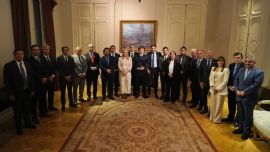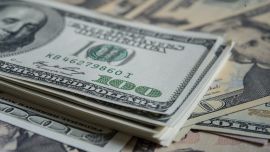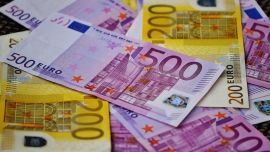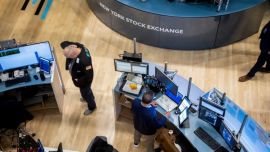Diego Silva feels the impact of inflation at his butcher shop in Buenos Aires: customers are digging deep inside their pockets to buy beef, a staple of the Argentine diet, due to a surge in prices which guts consumption.
Last month Argentina recorded the highest monthly inflation it has seen in three decades: a whopping 12.4 percent, bringing the annual rate to 124.4 percent over the last 12 months. All prices have risen, but food recorded the highest increase of 15.6 percent.
Mincemeat, or ground beef, rose 39.4 percent in August, according to a report from the INDEC national statistics bureau. More quality cuts are also following the trend.
"People who don't have money come to buy little by little, day by day," Silva says outside his establishment in Mataderos, the capital’s historic ‘beef neighbourhood’ which was once home to a huge cattle stockyard.
"They look at the prices, and end up choosing chicken or pork."
This is the country of asado, where all celebrations call for the grilling and eating of meat. Argentina is the main consumer of beef in the world, followed by Uruguay, the United States, Australia and Brazil.
In 2022, consumption rose to 52 kilos per capita, and this year "it will fall again to 46, 47," similar to 2019 and 2020, explains Miguel Schiariti, the president of the CICCRA Chamber of Industry and Commerce of Meat and Derivatives (CICCRA).
"Beef is what we have the most of, and Argentines are carnivorous," Silva notes.
‘People couldn't afford it anymore’
This year, the price of beef has been increasing at a slower pace than general inflation. Several factors influenced this. The drought, for example, forced many producers to oversupply because corralled cattle fatten faster.
But then came a 20-percent devaluation of the peso, announced on August 14, a day after the PASO primaries. Costs, like feed – all in dollars – increased. Prices shot up 70 percent in two weeks and consumption plummeted.
"People couldn't afford it anymore: it's not that they could just put in 1,000 pesos more, it's that [they would say] 'I can't buy it.'"
The slump forced a stabilisation of the market, but "it is a bit more expensive," Silva insists.
Soledad Nocito, for example, changed her eating habits.
"I started buying less red meat and more chicken, I started replacing it," says the 36-year-old university professor, who works two jobs to make ends meet.
"I buy more vegetables [which also went up in price] because of the increase in the price of meat."
‘A bit scary’
René Godoy walks through Mataderos with her weekly groceries. He spent 20,000 pesos on beef, about US$55.
"It's scary, it's a bit scary," says this restaurant employee. "I buy enough for the week, every week, to be able to survive, because the money just isn’t enough."
"Today I bought this, tomorrow or maybe even next Monday it might be more expensive."
CICCRA's Schiariti estimates that the price will continue to increase this year, and the one to follow.
With the end of the La Niña weather phenomenon and the return of the rain, ranchers hope to be able to graze their animals more and control the market.
On the other hand, due to the climate, many animals died and there were fewer pregnant cows and, consequently, less supply: "We are going to have between 1.3 and 1.5 million fewer calves," said Schiariti.
In dollars?
Argentina is one of the main beef producers in the world, and in the Cañuelas Agricultural Market, on the outskirts of Buenos Aires, much of the livestock is traded.
"Nice cow, how much do you want for it? 15, 20, 30, 35, 40? 35!": Agustín Lalor hardly takes a breath at the auction. He visits pen after pen, selling cattle, which results in domestic consumption or export.
From an elevated walkway overlooking the cows, calves and bulls, buyers raise their hands to make their offers.
"Inflation impacts everyone," says Lalor.
"Those are the costs... If you do not increase the price of the product you are selling, directly or indirectly, the profitability of your business is decreasing."
Last month – partly as a joke, partly as advertising – a butcher in Buenos Aires, fed up with inflation and the fluctuation of the peso, published his prices in dollars: "Beef ribs = five dollars, Mincemeat = three dollars.”
– TIMES/AFP
related news
by Javier Tovar, AFP

























Comments